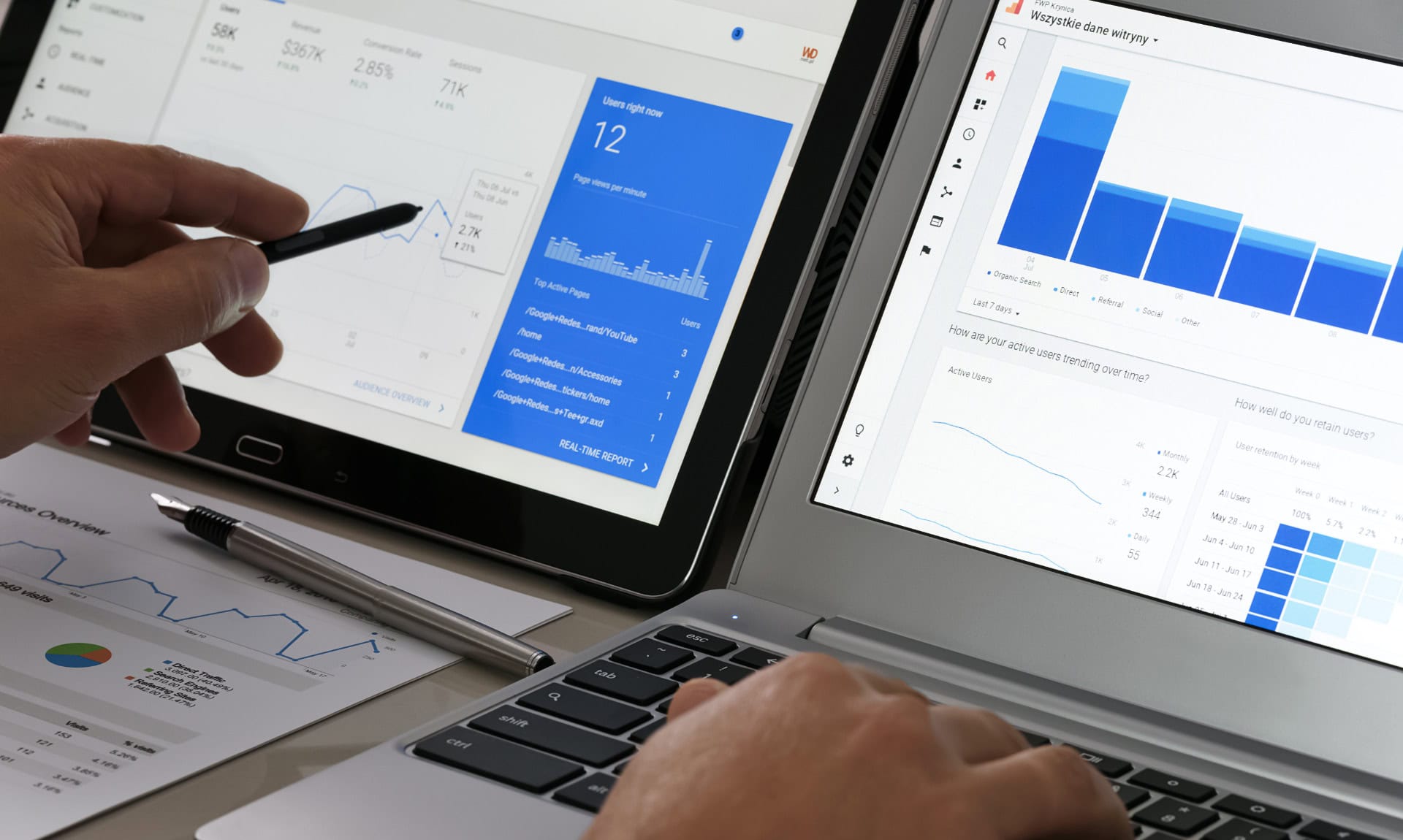
Programmatic Advertising: Complete Guide for 2024
Programmatic advertising has reshaped the way marketers connect with their audiences, offering unparalleled precision and efficiency in ad placement. As the landscape evolves, the ability to harness this technology effectively distinguishes competitive businesses from the rest.
This article explores the inner workings of programmatic ads, their benefits, the technology behind them, and the future of advertising in this automated arena.
What is Programmatic Advertising?
Programmatic advertising is an automated method of buying and placing digital ads using sophisticated algorithms and real-time data.
This technology enables advertisers to deliver highly targeted ads to specific audiences on various digital platforms, from websites to social media. By utilizing programmatic buying, businesses can optimize their advertising spend, ensuring that their messages reach the right people at the right time.
Programmatic Advertising vs Digital Advertising
To reiterate, programmatic advertising is a specialized form of digital advertising where algorithms automate the buying and placement of ads.
On the other hand, digital advertising represents the broader category of all online marketing efforts, including programmatic and performance marketing techniques, and uses various tools to engage audiences across the internet.
Programmatic Advertising vs Display
Display advertising involves placing visual ads on websites and digital platforms, regardless of the purchasing method, focusing primarily on reaching wide audience segments.
Programmatic advertising is just one of the purchasing methods used for display ads in order for them to populate across the web.
Programmatic Advertising vs Direct
Programmatic advertising leverages algorithms to automatically purchase ad space and optimize targeting, often in real time.
Direct advertising involves purchasing ad space directly from websites or networks, often negotiating terms and placements manually, which can provide more control over where ads appear.
Benefits of Programmatic Media Buying
Programmatic media buying offers distinct advantages that can significantly enhance advertising strategies. Some of the benefits are:
1. Increased Efficiency
Programmatic advertising streamlines the ad buying process, reducing the time and manual effort traditionally required to secure ad placements. This automation enables advertisers to launch campaigns quickly and adjust them on-the-fly, maximizing their ad spend efficiency.
2. Enhanced Targeting Capabilities
With programmatic marketing, advertisers can utilize vast amounts of data to target users based on specific demographics, interests, behaviors, and more. This precise targeting ensures that ads are shown to the most relevant audience, increasing the likelihood of engagement.
3. Real-Time Optimization
One of the most compelling benefits of programmatic advertising is its ability to optimize campaigns in real time. Advertisers can adjust bids, change ad creative, or shift focus to better-performing segments while the campaign is running, based on continuous feedback and performance metrics.
4. Broader Reach
Programmatic platforms provide access to a wide array of ad inventories across multiple networks and devices, expanding the reach of campaigns beyond traditional channels. This extensive reach helps brands connect with potential customers at various touchpoints throughout the consumer journey.
5. Detailed Analytics and Reporting
Programmatic advertising offers comprehensive analytics and reporting tools that provide deep insights into campaign performance. This data allows marketers to analyze what is working and what isn’t, enabling them to make informed decisions and refine their strategies for better results.
Programmatic Advertising Platforms
The ecosystem of programmatic marketing is supported by various platforms and components that streamline the ad buying and selling processes.
Demand-Side Platforms
Demand-Side Platforms (DSPs) are software platforms that allow advertisers and agencies to buy ad inventory from multiple ad sources automatically. They facilitate the management of ad buying using real-time bidding and enable advertisers to maximize the impact of their budgets by targeting specific audiences.
Supply-Side Platforms
Supply-Side Platforms (SSPs) enable publishers to manage their ad inventory and maximize revenue by automating the sale to multiple advertisers. These platforms optimize the match between available inventory and advertiser demand, ensuring that publishers get the best possible prices.
Ad Exchanges
Ad exchanges are digital marketplaces that facilitate the buying and selling of media advertising inventory from multiple ad networks. Prices are determined through real-time bidding, allowing for efficient, automated transactions between advertisers and publishers.
Ad Networks
Ad networks aggregate ad spaces from multiple publishers and offer this inventory to advertisers. They help advertisers find relevant spaces across a range of sites at once, while publishers benefit from access to a broader range of potential advertisers.
Data Management Platforms
Data Management Platforms (DMPs) collect, organize, and analyze a vast amount of cookie data from various sources to help advertisers and publishers make more informed decisions. They are crucial for segmenting audiences and optimizing targeting strategies within the programmatic ecosystem.
Customer Data Platforms
Customer Data Platforms (CDPs) consolidate and integrate customer data from multiple sources into a single, comprehensive database accessible by other software systems. This unified view of a customer helps advertisers personalize their messaging and improve the effectiveness of their marketing campaigns.
How Does Programmatic Advertising Work?
Programmatic advertising utilizes a detailed, automated process to optimize ad placements efficiently. Here’s a breakdown of the steps involved from the perspective of an advertiser:
- Step 1 – Defining Campaign Objectives: Advertisers start by outlining their campaign goals, target audience, and budget. Specific objectives such as increasing brand awareness or driving sales are established.
- Step 2 – Audience Selection: Using the DSP, advertisers select their target audience based on a range of criteria including demographics, interests, behaviors, and more. This precision targeting is made possible by integrating various data sources to create detailed user profiles.
- Step 3 – Creative Development: Advertisers create or upload their ad creatives to the DSP. These may include various formats such as display banners, video ads, or native content, tailored to appeal to the selected audience.
- Step 4 – Setting the Budget and Bids: The budget is set, along with maximum bid prices for ad impressions. This determines how much the advertiser is willing to pay for their ads to be shown to their targeted audience.
- Step 5 – Real-Time Bidding (RTB): The DSP automatically enters the advertiser into real-time auctions to bid on ad spaces that fit the audience and campaign parameters. These auctions happen in milliseconds as potential ad spaces become available on publishers’ sites.
- Step 6 – Ad Placement: If the advertiser’s bid wins, their ad is immediately placed on the chosen publisher’s site where it can be viewed by the targeted audience. Placement is based on both the bid amount and the relevance of the ad placement to the user.
- Step 7 – Performance Tracking and Optimization: After the ad goes live, the DSP continuously tracks its performance based on metrics like impressions, clicks, and conversions. This data allows advertisers to make real-time adjustments to their campaigns, optimizing factors such as bid strategy and creative rotation to maximize return on investment.
Programmatic Advertising Metrics and Measurement
Effective measurement is crucial in programmatic advertising, allowing advertisers to evaluate the success of their campaigns and optimize future strategies. Here are 10 commonly used digital marketing metrics to gauge the performance of programmatic campaigns:
- Impressions: Measures the number of times an ad is displayed, providing a basic indicator of reach.
- Clicks: Tracks how many times an ad is clicked by users, helping assess the immediate response to the ad.
- Click-Through Rate (CTR): Calculates the ratio of clicks to impressions, offering insights into how compelling an ad is to the audience.
- Cost-Per-Click (CPC): Shows the cost of each ad click, useful for managing the budget efficiency of campaigns.
- Cost Per Thousand Impressions (CPM): Indicates the cost for every thousand impressions served, helping gauge the expense of ad exposure.
- Conversion Rate: The percentage of users who click an ad and then complete a desired action, such as making a purchase or signing up for a newsletter.
- Cost Per Action (CPA): Measures the cost associated with a specific action taken by a user, like a sale or lead, directly tied to the ad.
- Return on Advertising Spend (ROAS): Calculates the total revenue generated for every dollar spent on advertising, assessing the overall effectiveness of the campaign.
- Viewability: Tracks whether ads are actually seen by users, which helps determine the quality of ad placements.
- Engagement Rate: Assesses user interaction with an ad beyond clicks, including interactions like mouse-overs, video plays, or social media shares, indicating deeper levels of user interest.
Programmatic Marketing Best Practices
Adopting best practices in programmatic buying is key to leveraging its full potential and achieving successful campaign outcomes. Here are some strategies businesses should consider:
- Define Clear Objectives: Establish specific, measurable goals for your campaign, whether it’s increasing brand awareness, generating leads, or driving sales.
- Use High-Quality Data: Utilize accurate and relevant data for targeting to ensure your ads reach the right audience. This includes leveraging both first-party data and third-party data sources for enhanced precision.
- Opt for Transparent Platforms: Choose DSPs and SSPs that provide clear insights into where your ads are being placed and the performance of each site, helping to avoid low-quality placements and ad fraud.
- Prioritize Viewability: Focus on ads with high viewability scores to ensure they are seen by users, which is more likely to drive engagement and conversions.
- Incorporate Real-Time Adjustments: Utilize the real-time data and feedback available from your programmatic campaigns to make immediate optimizations, adjusting strategies like bid adjustments and targeting refinements on the fly.
- Focus on Creative Quality: Ensure that your ad creatives are engaging, relevant, and optimized for different platforms and devices. Tailored and dynamic creative can significantly improve performance by resonating more effectively with different audience segments.
- Regularly Update Audience Segments: Continuously refine and update your targeting strategies based on campaign data and emerging trends to keep your ads relevant and effective.
- Implement Robust Analytics: Employ advanced analytics tools to deeply understand campaign performance and user behavior, which will guide your future advertising decisions and budget allocations.
- Ensure Privacy Compliance: Stay updated with data privacy regulations like GDPR and CCPA to manage user data responsibly and maintain consumer trust.
- Leverage Cross-Channel Strategies: Integrate your programmatic efforts with other digital marketing channels for a cohesive omnichannel strategy that amplifies reach and engagement across multiple marketing touchpoints.
Programmatic Advertising Examples
Programmatic advertising can be observed across various platforms, each using unique approaches to automate ad buying and targeting.
Are Facebook Ads Programmatic?
Facebook ads can be considered programmatic as they use automated processes to place ads based on user behavior, preferences, and demographics. The platform utilizes its own rich data and algorithms within the Facebook Ads Manager to automate ad targeting and buying, fitting within the broader definition of programmatic advertising.
Are Google Ads Programmatic?
Google Ads operates on a programmatic basis through its real-time bidding platform within the Google Ads and Google Marketing Platform. Advertisers can automate the purchase of display and video ads across Google’s extensive network, utilizing Google’s data insights for targeted advertising efforts.
Are YouTube Ads Programmatic?
YouTube ads are indeed programmatic, as they are sold and managed through Google Ads, which allows for real-time bidding and automated placement across YouTube’s platform. This integration enables advertisers to target audiences based on detailed demographics, interests, and viewing behaviors.
Are Amazon Ads Programmatic?
Amazon Ads are also considered programmatic. Through Amazon DSP, advertisers can automate the buying of display and video ads not only on Amazon but across other sites, using Amazon’s extensive consumer shopping data to target ads effectively.
Are OTT Ads and CTV Ads Programmatic?
Over-the-Top (OTT) ads and Connected TV (CTV) ads are typically programmatic, allowing advertisers to automate the buying and placement of video ads across streaming platforms. These streaming advertising platforms use data-driven targeting and real-time bidding to efficiently place TV ads in front of highly engaged streaming audiences, maximizing the relevance and impact of advertising campaigns.
- Learn more about OTT and CTV.
Programmatic Advertising: Final Thoughts
Programmatic advertising represents a significant advancement in digital marketing, offering precision, efficiency, and scalability that traditional methods can’t match. By understanding the mechanisms of programmatic buying and utilizing the various platforms and strategies discussed, marketers can enhance ad performance and achieve superior results.
As the digital landscape continues to evolve, embracing these innovative techniques will be crucial for staying ahead in a competitive market, ensuring that every ad dollar spent is optimized for maximum impact and return on investment.
News Via Inbox
Get our monthly report on all the latest and greatest trends in digital marketing.



